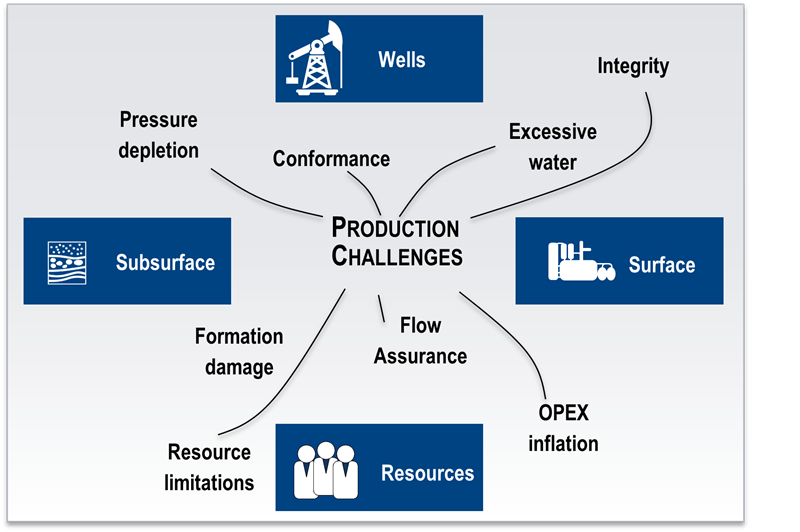Automated coffee makers, self-driving cars, and the future of production operations
Leading the development and implementation of innovative production solutions for SLB is an exciting and critical role. That’s my job, but I find people don’t always understand what I do, (especially my 11-year-old twins), and it’s important they do because innovation can change lives; it can make things better for all of us, so let’s have a look.
The impact of digital technology on our daily lives cannot be overstated. Today, with advances in data management and AI, many everyday tasks can be performed automatically, streamlining the way we work and saving us time every day—think auto-filling forms online, compared with the old world of paper form-filling and waiting for a reply in the post.
Thanks to digital, we have grown accustomed to a wide range of conveniences, from freshly brewed coffee when we wake up, to automated temperature control in our homes and refrigerators that order our groceries. Comparable developments within oil and gas production operations can help make work safer, reduce emissions, and drive-down the cost of fuel. You could say, my role is asking, ‘If coffee machines can make coffee without any manual intervention, why can't oil or gas wells automatically inject inhibitors to improve uptime?’ It’s using the ability of AI to think and analyze data to bring the same level of automation and convenience to production operations as it has to our personal lives.

Many factors influence the success of production, such as reservoir producibility, well conditions, resource availability, flow assurance, power availability, facility performance, regulations, and economics. Each field, operator, and well has unique characteristics, making it crucial to have customized, fit-for-purpose solutions that combine hardware, software, and digital applications. The speed at which these solutions can be developed and deployed is also critical.
To help customers achieve their goals, SLB has established Innovation Factori; with six dedicated centers in locations spanning the globe, and a presence in 30 other countries, the aim is delivering value quickly and efficiently. Digital and AI solutions for the entire production value chain, from prospect discovery and well delivery to long-term production operations and support for energy transition technologies are created—harnessing the entire SLB technology portfolio, as well as support from SLB research and engineering centers.
Innovation Factori enables us to deploy 'just-right' customized solutions that meet the specific needs of our customers in the production operations space.

These solutions can be grouped into four categories for value realization by production operators.
- "Know Your Flow" with the lowest possible uncertainty at any point from the perforations in the well bore to the facility or export point. To mitigate the costs of flow instrumentation and surface interventions associated with measuring your flow, SLB suggests using a combination of a sensor network topology to estimate the rate, calibrate with available network level measurements, and utilize stochastic methods to reduce uncertainty. This can all be automated so that production engineers receive curated flow information per well or node, which they can use in their subsequent workflows.
- “Maintain Your Flow” at the most economical level possible while adhering to constraints, regional mandates, and economic factors. By utilizing advanced digital tools powered by machine learning (ML) and AI, operators can access technologies that keep their well portfolios optimized for intervention and workover, ensuring that the latest data is available and processed efficiently. We call this technology the Intervention Optimization Manager, it provides an up-to-date list of well candidates, prioritizing return on investment (ROI) and associated risks based on historical data. Additionally, optimal flow assurance can be achieved by utilizing pump-on-demand technologies for inhibition chemicals in the wellbore and flowlines. These technologies rely on SLB technology blocks, including the multiphase flow model on the edge and the thermodynamics engine on the edge, among others.
- “Maximize Your Flow” by identifying and removing bottlenecks in the production system to push it to its full potential. This includes optimizing lift performance to maximize output and autonomously controlling in-flow control valves to mitigate water from multilaterals. We also provide near real-time guidance on distributed temperature sensing, eliminating the hassle of managing large data sets, and other AI-powered solutions. Our technology blocks, such as advanced algorithms and ML models, enable us to identify and resolve flow issues quickly and efficiently.
- “Decarbonize Your Flow” using AI and digital technologies to reduce field trips, eliminating cold venting of gas wells (which results in significant greenhouse gas emissions when a liquid-loaded gas well must be manually balanced for pressure), improving power combustion through better equipment operation, and implementing other sustainable solutions. This is achieved with advanced analytics, ML, and edge computing technologies, it can optimize operations and reduce the industry's carbon footprint.
Although digital technologies have been utilized in the oil and gas industry for many years, the current focus is on using these tools to enable automated interpretation and decision-making. The goal is to reduce the time between detecting a production impairment event and taking the necessary corrective action. By leveraging AI and ML, operators can improve operational efficiencies and avoid costly delays caused by human error or interpretation.

In the days before satellite navigation became the norm, driving from New York to Washington using only a map to find your way, was done with only a static view of a dynamically-changing journey; there are no up-to-the-minute traffic warnings in a map book. Similarly, desktop workflows provide a static view of the constantly changing production ‘journey’. However, digital technologies are maturing—we can provide production operators with real-time guidance, enabling them to navigate issues and detect production impairments earlier, to respond faster with corrective action.
Today, we see self-driving vehicles as the next technology to transform our journeys, and in a similar way, our industry is moving towards automating production. Innovation Factori is perfectly positioned to deliver these solutions rapidly, with ‘last-mile’ customization. With the right technology, we can reduce production impairments and bring our industry closer to the goal of operational nirvana.

Let's take a closer look at two examples to illustrate the concept described above:
- SLB has revolutionized the gas lift process by providing an autonomous solution that maximizes production without the need for a current well model or manual adjustments. Gas lift is an intensive process that involves sourcing, compressing, transporting, and injecting gas into the well. The traditional approach is to use a digital tool to model the well and derive the best injection rate of gas based on this model. However, this approach requires the model to be kept "current," which is time-consuming and costly. SLB provides a new solution by utilizing an optimization algorithm delivered on the edge, which estimates or measures the real-time view of the production autonomously. This algorithm controls the gas lift injection control valve to maximize production within given constraints, eliminating the need for production engineers to keep the models "current" and manual adjustments based on model-driven workflows. This autonomous solution has been implemented successfully in North America and is being implemented in various assets worldwide.
- Flow assurance issues are a global problem that can cause production impairment through well downtime, pipeline blockages, and other issues. Typically, operators use chemicals to treat the situation by pumping a required amount at an accessible point—either in the well or in the pipeline. However, the operational expenses of these chemicals can quickly add up, and operators are motivated to inject the right amount of chemicals at the right time. This process relies on production engineers and their models (again). The SLB innovation was to deliver a method for pump-on-demand. It is well established that injecting the right amount of chemicals at the right time can significantly improve uptime. The digital application that autonomously controls the chemical injection pump is connected to real-time data streams, and computation is performed at the source to minimize any lag between detection and action. This digital application is realized through advanced innovation generated by a multiphase flow model and thermodynamics engine on the edge. This has been implemented in Latin America, and the results show more than a three times improvement in well-up time. The solution is currently being deployed globally in various onshore and offshore operations.

